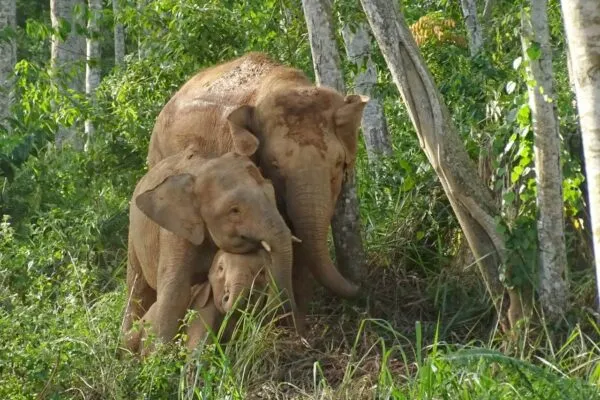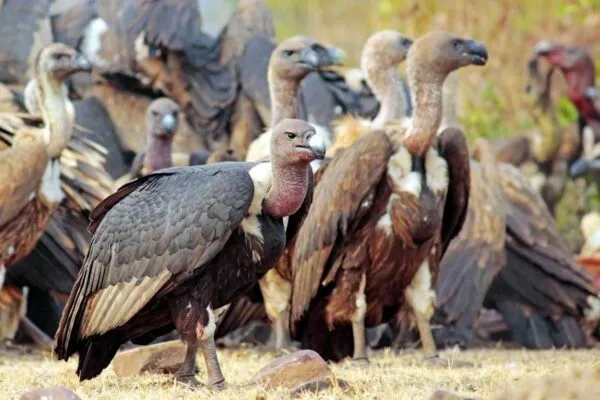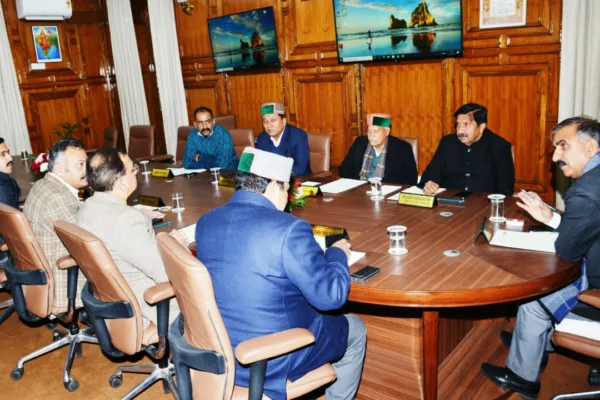Stewards of Biodiversity: How are Indigenous Tribes Helping in Wildlife Conservation?
For innumerable millennia, indigenous tribes in different corners of the world have been helping in wildlife conservation. They have walked the same path as tigers, drank the same water as wild buffaloes, and sang the same songs as native birds.
Living lives on the values of ‘no waste’ and ‘giving back to nature’ have helped conserve flora and fauna. However, the tribal people’s efforts to help conserve wildlife have frequently been ignored.
The indigenous and ethnic people have learned to live in the most hostile environmental conditions. But most interestingly, they live in localities that are immensely rich in biodiversity.
It is estimated that about 300 million indigenous people are living in the world, out of which nearly half, i.e. 150 million live in Asia, about 30 million in Central and South America, and the rest scattered across Australia, Europe, New Zealand, Africa, and the Soviet Union.
The indigenous people have played a vital role in the conservation of environmental management and development process as they possess unparalleled traditional knowledge regarding eco-restoration. There is no doubt that these people know how to live in harmony with nature.
But the attempts at “civilizing” them by providing substitute shelter areas and livelihood options have brought about more harm than good. Poor state policies on wildlife protection, afforestation, climate change, and tribal eviction have cost the forests and wildlife irreparable changes.
Many studies over the past decades have shown that stewardship by forest-dwelling communities considerably slows the rate of forest degradation.
Since diminishing and acclimating to climate change needs sustainable forest management, the tribal people who have been living in and around the forest for millennia could actually play a crucial part.
Indigenous tribes that have been helping in wildlife conservation can offer incomparable wisdom to save various threatened flora and fauna species.
Indigenous Tribes and Wildlife
The low-carbon-footprint lifestyle of the tribal people has conserved the global environment for millennia and their wisdom and sustainable methods should be recognized, adopted, and promoted to effectively reduce harm to the environment and wildlife.
Indigenous people’s lands may harbor a significant proportion of threatened and endangered species globally. These lands cover more than one-quarter of the earth, of which a significant proportion is still free from industrial level human impacts.
History has shaped and reshaped the relationship between native people and animals. Traditionally, animals have held several integral roles in the values of every tribal cultural group throughout the globe.
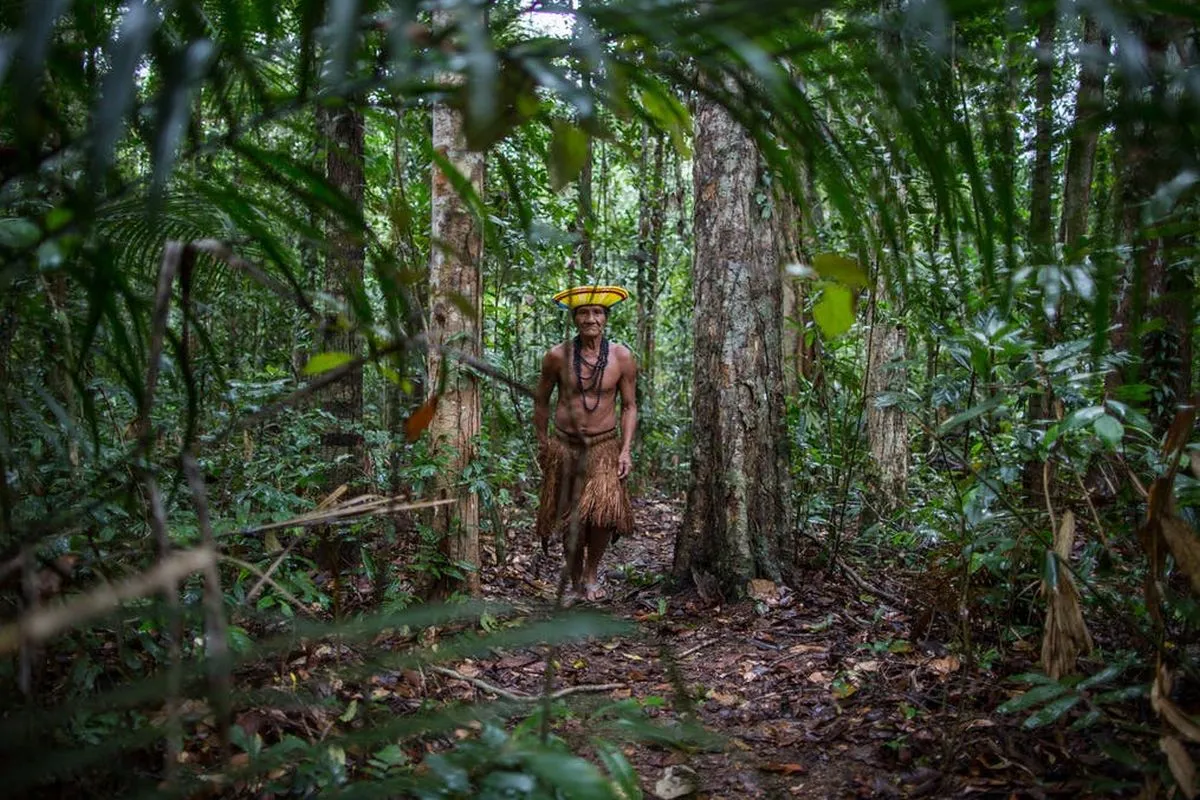
Image: Conservation International
In many tribal belief systems, animals are treated and revered as sentient beings, and humans are not allowed to harm or hunt these creatures. In a vast number of tribal cultures animals are treated as equals.
Various tribal creation stories often feature animals as playing a pivotal role in the creation of the universe, the earth, and the emergence of human beings.
Most tribal belief systems centralize human-animal relations as having a spiritual and reciprocal connection. Rarest of native animals and plants can find a haven on tribal lands, Tribes have always protected their lands and native habitat.
Tribal folklore help understand and protect various animal species. Their laws against hunting and animal killing can help preserve animal species in contemporary times.
The Obstacles
Tribal people’s survival depends on the land they have lived in harmony for generations, yet they are being evicted from protected areas in the name of conservation. The modern idea of conservation removes local people and puts a fence around forests – at the same time letting in tourists or even allowing mining.
Over the past century, governments have been struggling to protect wildlife amid countless environmental and anthropogenic activities.
While indigenous people can offer tremendous help in preserving the wildlife, their contribution has been widely excluded. Despite the widespread nature of these problems, however, contemporary tribal animal law has largely been absent from legal scholarship.
Tribal communities own or influence the management of tens of millions of acres of land. Tribal lands provide vital habitat for many threatened and endangered flora and fauna, many of which are both biologically and culturally significant to tribes.
Yet the tribal people are being illegally evicted from their ancestral homelands in the name of “conservation.” It is often wrongly claimed that their lands are wilderness even though tribal people have been dependent on, and managed, them for years.
This proven logic, of tribal communities helping in the protection of forests and their inhabitants, is highly criticized by conservationists as they firmly believe that the presence of tribal people in the forests is harmful to wildlife and the ecosystem.
In many countries, governments often encourage the eviction of tribal communities with an agenda to boost safari, create protected areas, and attract tourism – all of which frankly fragment the natural habitat and make the wildlife more vulnerable.
Various anthropogenic projects have infiltrated the forests inhabited by numerous tribal communities. Such projects disproportionally affected hundreds of thousands of tribal people, exhibiting the classic example of forced displacement and destruction of wildlife, alongside cultural sites.
Moreover, many evicted tribal households are denied any compensation as their ancestral claim to the land is abruptly denied by the authorities.
In the last two decades, there has been a growing concern by several international conservation-based organizations to protect the endangered wildlife species, with a special focus on Asia and Africa, The conservation versus people approach to protect wildlife has worsened the lives of native people and wildlife.
The tribal communities across India and most of Africa are in a pitiable condition, their status of land rights and tyrannical measures adopted by governments to separate tribal people from their ancestral land and forest.
No wonder, for thousands and thousands of years, the earth’s original people have faced hard challenges, ye they have managed to survive and conserve their natural environment.
And they are still conserving nature, in spite of modern “so-called civilized” humans, who have been systematically abusing their rights, stripping their lands, and confining the wildlife to ostensible reserves and protected areas while violating the forests themselves.
What can help?
Various experts have time and again insinuated that conservation initiatives need the involvement of local tribal communities – rather than the token activism of urban dwellers – to ensure that humans and animals coexist peacefully.
Satellite images and academic studies have shown that indigenous people provide a vital barrier to the deformation of their lands.
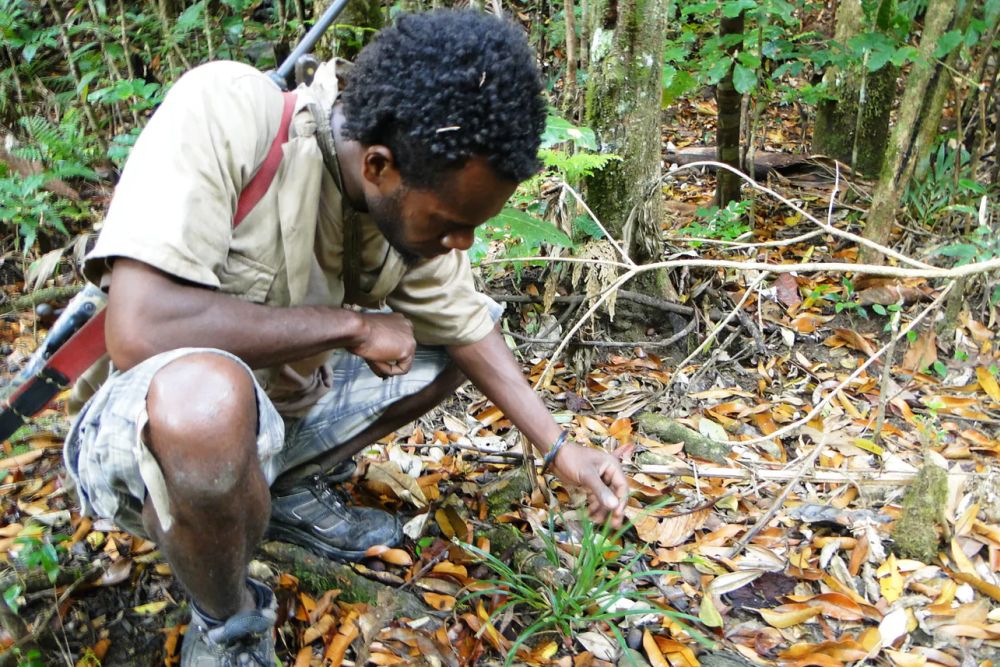
Image: Francois Tron/Conservation International
It is high time the respective governments and conservation organizations began duly acknowledging the critical role tribal people play in conservation, preservation, and safeguarding the richness of local biodiversity.
Tribal nations can incorporate customary and traditional principles into contemporary laws, so that tribal animal law can begin to untangle from years of colonial entrapment.
Several indigenous tribes around the world derive spiritual value from revering fauna and flora species. Conventional species conservation practices ignore this spiritual value and tribes are often evicted from protected areas.
The spiritual beliefs of various tribes can make them effective conservation stewards. A case study to assess the spiritual value of the Bengal tiger for the Soligas tribe (India), which showed how such values can be harnessed as an economic tool for promoting sustainable wildlife conservation.
For a native wildlife reintroduction to work, native habitat is needed, and tribes are to be appreciated for saving so much of natural habitat. Various tribes know different things about different native species and how to preserve them in the changing nature of the planet.
The Awá are an indigenous people of Brazil living in the eastern Amazon rainforest. They know at least 275 useful plants, and at least 31 kinds of honey-producing bees.
Similarly, Baka people – an ethnic group of nomadic pygmy people inhabiting the rainforests of eastern Cameroon and northern Gabon – have a diverse knowledge of the wildlife. Their traditional knowledge could impart conservational wisdom that the current conservationists lack.
In Botswana, the Bushman communities that have lived in the Kalahari Desert for generations, have been evicted. Meanwhile, the conservation area earlier occupied by them is being mined for diamonds and other non-renewables.
Baiga tribe in India has set up its own project to “save the forest from the forest department” – setting out rules for their own community and outsiders to protect the forest and its biodiversity.
The Baiga stand strictly against hunting tigers, whom they consider as their kin, but like many tribal people in India, and forcibly evicted from their ancestral homeland in the name of “tiger conservation,” while tourists are welcomed in.
Such people who consider wild animals a part of their tribes can help in protecting endangered flora and fauna far better if they are not forced out of their homelands and allowed to share their knowledge. There are many more examples of how tribal people are the best conservationist and guardians of the natural world.
Indigenous Tribes Helping in Wildlife Conservation
✦ South Asia’s tribal people have coexisted with the tiger for thousands of years. For instance, Nepal serves as a global tiger conservation success story – the tiger population across the Tarai region have improved remarkably.
Evidently, tiger densities can actually be higher in the areas where people live than in those from where they have been evicted. The tribes provide a variety of different habitats and help detect and deter poachers.
Nepal’s indigenous people who live near national parks that are tiger sanctuaries are the main contributors to tiger conservation.
These communities, including the Tharu, Bote, and Musahar people, among others who have lived alongside wildlife long before national parks were established, applying their ancestral knowledge to coexist with the natural world.
✦ The cloud forest of Mount Panié faces increasingly severe droughts worsened by climate change as well as invasive species.
To protect the trees they revere, the Indigenous Kanak people of New Caledonia – who depend on these forests for survival – are working to expand the 5,400-hectare (13,300-acre) Mount Panié Wilderness Reserve.
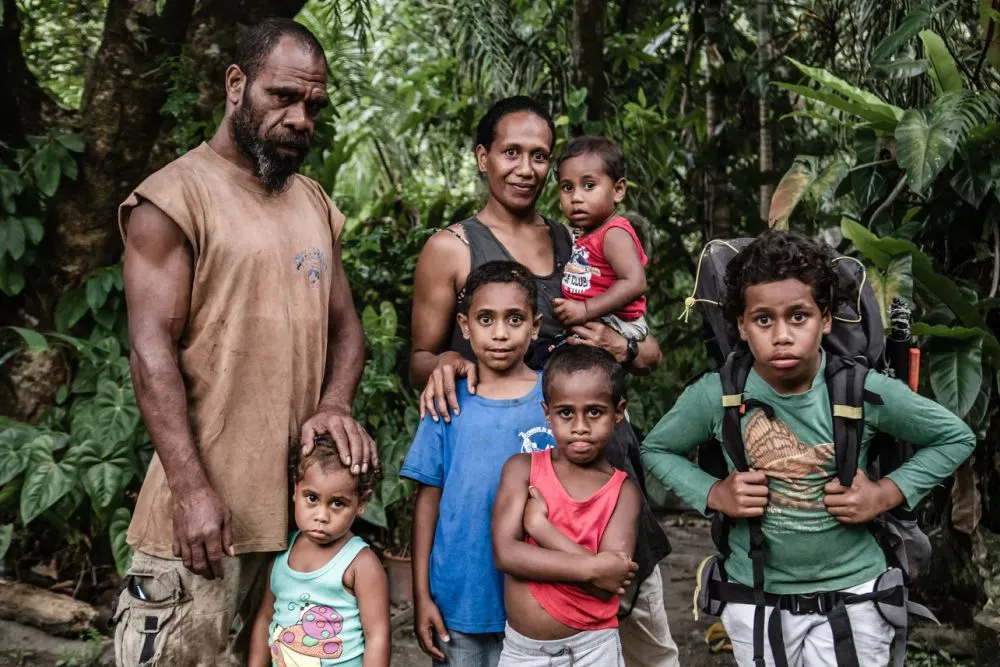
Image: Shawn Heinrichs
For the past two decades, the tribe has worked with Conservation International to establish a local organization to manage the reserve.
Now they aim to expand the reserve area to 10,000 hectares (24,710 acres) of land to protect the entire kauri tree population, especially dayu biik– which is a critically endangered subspecies of the thousand-year-old kauri trees.
✦ A modern-day effort to restore the Amazon, powered by tradition, has inspired a new way to restore the forests surrounding their land. The majority of this once-thriving region has severely degraded, converted into land for farms, and ravaged by the fires that burned through the Amazon in 2019.
To restore the forests, the indigenous people implemented a technique of sowing a large number of seeds. The group begins by sowing a large and varied mixture of seeds that yield plants native to the area, ensuring the seeds used would produce the highest yield of vegetation native to the land while restoring the soil.
Indigenous people have already helped plant enough seeds to yield more than 1.8 million trees and has seen a range of positive impacts on the region, from improved water quality to increased agricultural production.
This technique could also help tackle climate change by growing more varied native forests – which absorb considerably more carbon than forests with a single type of tree.
✦ A tribal village in Meghalaya, India, has been trying to protect a community forest where western hoolock gibbons dwell. The ever-increasing human presence is gnawing away at the 40-square-kilometer forest, endangering the hoolock gibbons.
The tribes in the region are trying to protect the species and have somewhat succeeded as there hasn’t been a single poaching incident.
The western hoolock gibbon is threatened globally. An estimated 90 percent of its population has been lost over the past 30 years due to deforestation, hunting, and government neglect.
Around 3,000 western hoolock gibbons are believed to remain, some 2,600 of them are in northeastern India, while the rest are scattered in Bangladesh and Myanmar.
✦ In the northern part of Mount Kenya resides the indigenous community of the Il Lakipick Maasai (“People of Wildlife”). The tribe owns and operates the only community-owned rhinoceros sanctuary in the country.
They have managed to eliminate the human-wildlife conflicts that arise in the area due to the intrusion of wild animals searching for water, prey, and pasture during drought.
These indigenous people have reduced bush-cutting in order to provide more fodder for wildlife on their lands, and with that strategy, they have ensured the peaceful coexistence with animals.
And there are plenty more such inspirational success stories, where indigenous tribes are helping in wildlife conservation by protecting variously threatened and endangered wildlife species.
Their lifestyle and spiritual beliefs play a major role in wildlife conservation, and it is crucial to include their contribution in the process.
Coordination with Tribal People
Coordinating with indigenous tribes that are helping in wildlife conservation is a much better way to protect the environment and wildlife. And if history tells us anything is that removing them from the equation just exacerbates the harm.
For instance, when the Maasai were removed from Ngorongoro Crater in Tanzania in 1974, poaching incidents increased; the eviction of indigenous people from Yellowstone Park in the United States in the late 19th century led to overgrazing by elk and bison; Aborigines in Australia have used controlled burning to protect forests from devastating conflagrations, but in modern times bushfires are ravaging the continent island…and the list goes on.
Indigenous people and local communities have been proactively confronting significant negative effects from global changes in climate, biodiversity, and ecosystem function. It is imperative to acknowledge and utilize the efforts of the tribes for nature.
They have been facing these challenges in partnership with each other and with an array of other stakeholders, through co-management systems and by revitalizing and adapting local management systems.
However, the knowledge and perspective of indigenous communities are absent in the global approaches to conservation.
If conservation is actually going to start working, conservationists need to ask tribal people what help they need to protect their lands, listen to them, and then be prepared to back them up as much as possible.
A major change in thinking about conservation is now urgently required to save the threatened and endangered flora and fauna.
